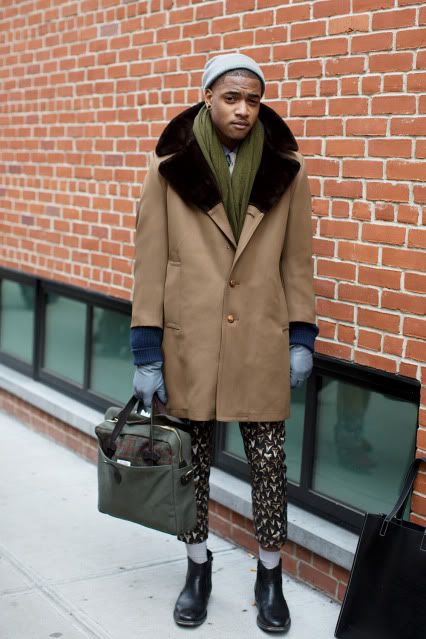EDITOR’S NOTE: THE FOLLOWING SERIES OF EMAILS OCCURRED
BETWEEN TWO PARTIES OF THIS BLOG.
Sam Franklin
Subject: NYFW
Sent: Tuesday, February 19, 2013 9:46 AM:
Wat did you think of nyfw
Sam Franklin
Subject: Re: NYFW
Sent: Tuesday, February 19, 2013 9:49 AM:
Wat did you think of nyfw pls email me soon possible
John Lugg
Subject: Re: NYFW
Sent: Tuesday, February 19, 2013 10:02 AM:
It was alright, I guess. Billy Reid was cool.
Sam Franklin
Subject: Re: NYFW
Sent Tuesday, February 19, 2013 10:02 AM:
What did u think of street style
Do you have anything to complan about like all theother
bloggers who are washed up
John Lugg
Subject: Re: NYFW
Sent: Tuesday, February 19, 2013 10:57 AM:
Of the collections? No, not really. Nothing was atrocious.
Everything was nice and looked alright to me.
I don’t care about blogger drama. That seems kind of dumb.
And a waste of time.
However, now that I have some time to reflect on it I do
have an input, however inane.
As more menswear bloggers start paying more attention to
fashion shows rather than buyer exhibitions, I think some things need to start
to shift – and in certain areas – are already shifting.
At buyer exhibitions, photographers catch the details. They
stop the passage of time to allow the reader/viewer to take some time with a
garment that they may not even have when they are looking at the garment in a
shop. Sure, you don’t get the feel and weight of the garment, but you know what
to expect. There are a lot of menswear photographers who are very good at catching
those little details that give you a great impression and feel of the garment.
But as you watch fashion shows, what does the photographer
do? They capture little details and brief, quiet moments of time. Can they
fully express what is going on at the show? They could do that when they took
10 pictures of a pair of jeans and posted it to a blog, but 10 pictures of a
fashion show does little to convey what is actually going on there. When I sit
down and view photographer’s work at fashion shows, the quiet expression is
what is most praise-worthy – it is the photographer’s ability to capture a
special moment rather than convey the entirety of the show. This is all good,
I’m for photography as an art, but I think evaluating shows through pieces of
art is difficult.
For the internet “consumer,” you can’t go to shows and
looking at pictures isn’t ideal. There are the art photographers, as previously
mentioned, and those awful, low-res, shots that national publications collect.
There has got to be a way to see the show “better.”
Here is where video comes in. People have been taking videos
of shows for a few years now, but I don’t think they’ve started to pick-up until
recently.
Take in point, Billy Reid from his S/S 2013 show:
I can’t say I’m blown away. It still sort of feels like
those inorganic shots that GQ collects after each show.
Now watch Billy Reid’s F/W 2013:
Improvement?
I think there’s a lot of improvement. I actually enjoyed F/W
2013. It captured details, mood, and the general feel of the clothing and show.
It moves the viewer along and doesn’t allow the video to stagnate. People are
figuring out that video can be effective. They’re using it. I, the internet
consumer, am enjoying it.
Sam Franklin
Subject: Re: NYFW
Sent Tuesday, February 19, 2013 11:02 AM:
Wow ur dumb

